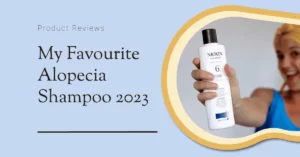
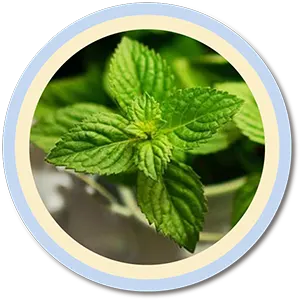
I’ve used peppermint essential oil (PEO) for ages, mainly to relieve tension headaches. In fact, along with lavender oil, it’s the first essential oil I ever used – and when I travel, I carry a bottle of each with me! But peppermint oil for hair growth is a relatively new discovery for me. And the more I’ve researched it, the more I’ve used it: to see if I can apply this oil for hair loss, too.
And I wanted to share my exciting findings with you here! Namely, the following…
Peppermint oil has been scientifically proven to help hair grow.
Keep reading to discover a study that shows peppermint oil’s potential as a hair loss treatment. Oh, and a few other ways you can use it to boost overall wellness. Yay!
But first, a quick look at some of the good stuff…
Coming up:

Emma’s ‘not a doctor’ disclaimer
Hi there, I’m an alopecian, I’m not a doctor! Any advice I give is based on my own research and personal experiences. This site is however reader-supported. When you buy through external links, I may earn a tiny affiliate commission. Learn more here.
Whether you’re aware of it or not, peppermint or mint leaf extract stars in many a hair loss shampoo, including Nioxin and Keranique. And these brands don’t include it for its pleasant smell – that’s just a bonus.
Here’s what PEO can do for your scalp and hair…
When applied topically, mint oil increases microcirculation – basically, helping blood to reach your hair follicles faster. In fact, a study in Microvascular Research revealed that a 4% menthol solution could widen blood vessels, effectively increasing blood flow.
Boosting blood supply to revitalize the scalp is essential if you’re suffering from thinning hair, alopecia or a receding hairline.
Maybe you’ve entered the telegon (resting phase) of your hair growth cycle too early. Or you might be stuck in that phase for longer than you should – it normally lasts 3 months.
In any case, peppermint oil can give your scalp the kick it needs to move back into the anagen (growth phase) and to start producing hair again. Stimulating the anagen growth phase is what topical treatments like 2% and 5% minoxidil seek to do – PEO is just a more natural way of doing it.
“What does oxygen have to do with healthy hair?” You might ask. But bear with me.
You see, without enough oxygen, DHT – that pesky hormone which can aid hair loss by reducing follicle growth space – has the perfect environment to grow.
But with peppermint oil boosting blood flow to deliver fresh, oxygenated blood to the scalp, you can inhibit DHT production in a more natural way than many of the hair growth shampoos on the market. Yay!
The antimicrobial and antibacterial properties of peppermint oil make it one of the most effective essential oils at tackling fungal conditions. (Gross.) PEO also shows strong antioxidant activity and anti-allergenic properties, meaning the chance of negative side effects are much slimmer.
So instead of relying on harsh chemicals, peppermint oil gently cleanses the scalp to remove unwanted bacteria, excess oils and DHT, which can inhibit hair production. Think of it as a carwash, for your head. Mmm, minty…
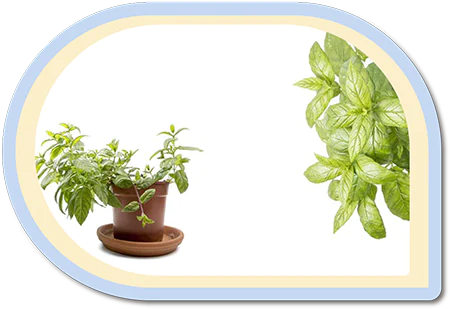
Can peppermint essential oil regrow hair? Well, unfortunately there is no miracle cure for alopecia. A range of factors contribute to hair loss, just like a range of lifestyle and dietary changes might be needed to help it grow back. Topical products are only part of the treatment plan.
But the exciting thing is, peppermint oil IS a very effective topical treatment. And it’s completely natural – so you aren’t at any risk of more hair loss or other bad side effects by including peppermint oil in your haircare routine!
According to this study, PEO also has natural anti-inflammatory properties. It’s used to treat joint pain and digestive disorders like irritable bowel syndrome (IBS) for that very reason.
Inflammation, as you may know, is what usually triggers the autoimmune response. With alopecia, the autoimmune response is what causes the immune system to attack healthy hair follicles – so the more you can do to lower inflammation and prevent this ongoing assault, the better!
Like I said, a bonus benefit. Peppermint – known as Mentha Piperita by plant enthusiasts – is a blend of spearmint and watermint. The aromatic result makes for delicious teas, refreshing gum, yummy ice-cream… and a fresh solution for toothpastes, shower gels and shampoos alike.
LA Says: The essential oil can be a little overpowering for some – and it’s not recommended for use near the eyes. That’s why peppermint is usually mixed with a carrier oil. But more on that in a sec. 😉
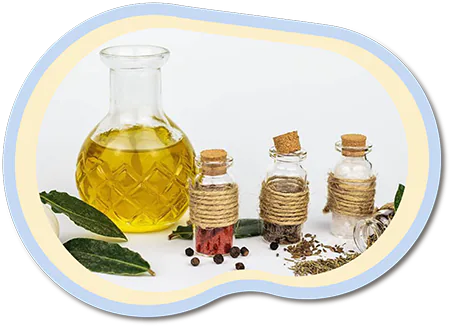
Traditional plant remedies, for instance castor oil and neem oil, have been used to treat hair loss for centuries – but only a few have been scientifically evaluated. Peppermint belongs to the same family as another aromatic herb – rosemary – whose oil has also been used to treat hair loss. In fact, in human trials, rosemary oil proved just as effective as 2% minoxidil, with less scalp itching after 6 months.
And PEO knows how to do its family proud… it can fight hair loss, too!
That’s the theory, anyway. Now, onto some practicalities…
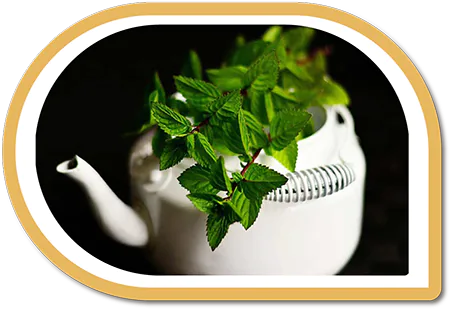
Topical minoxidil (Rogaine®) is one of the most popular topical treatments for hair loss around. In fact, along with oral finasteride (Proscar®), it’s the only FDA-sanctioned hair loss treatment in the US.
And for many people, it’s really effective. However, I personally don’t advocate its use – especially if you’ve got extensive bald patches.
Ok, so this treatment that your dermatologist will probably recommend can be effective on small patches, at least initially. But what happens when those bald spots spread?
Minoxidil is a very strong hair treatment, which I found had pretty bad side effects (headaches, a dry scalp and dizziness, in my case). Even Upjohn Pharmaceuticals, who first made minoxidil as a hypertension medication, warn against these effects, plus others like rapid weight gain, increased heart rate and difficulty breathing. Yikes.
When I started using minoxidil, I realized that I didn’t like applying large doses of something that made me feel so unwell. So I moved to the natural approach instead.
Since then, I’ve used a range of natural hair products on and off. And some seemed to work… those fuzzy white vellus hairs would pop up to say hello.
But because I’ve never isolated a single treatment – or stuck to one for long enough – I’ve never known which one was actually doing me good. I needed evidence as to what was causing this hair regrowth.
That’s why I was so excited when I recently came across this 2014 study by Korean researchers, which tested a couple of different natural remedies against minoxidil and their effects on hair growth in mice. These included:
These 4 topical treatments were applied 6 days a week for 4 weeks to mice that had been shaved on their dorsal area – to standardize the telogen phase for all.
The results? PEO showed the most prominent hair growth effects: more follicles that grew longer, and thicker. It rapidly moved that particular group into the anagen phase of the hair growth cycle; whereas the other group’s transition was both slower and less effective.
LA Says: Check out what these results looked like below but be warned: mice are involved. Turn away if you’re squeamish!!
Peppermint oil blew the other two treatments out of the water, too. The study concluded that PEO was the most effective treatment of the four for regrowing hair, without any toxic or adverse effects. Yay, peppermint!
LA Says: This study was carried out on shaved mice, not humans with alopecia. And it was back in 2014 – so it would be great to read about recent human trials. To see if peppermint oil can be used for alopecia, as an alternative to things like finasteride or minoxidil.
I don’t personally think the brand makes a massive difference. Just make sure whatever you buy is 100% pure essential oil. The study I mentioned above used a French oil called Sanoflore®, that had been diluted in Desert Whale jojoba oil.
I use this one by Young Living. Well, that was before I read all the stories behind the brand and got creeped out. Now I’m using up my bottles before I move my custom elsewhere!
In any case, the oil is really good for topical use – and a couple of drops added to hot cacao is delicious, too!
I’d also recommend this one by Majestic Pure. I really like this brand – which is why I include it in my review of the best coconut oils for hair growth – and it looks like I’m not alone. Customers love it for a range of household purposes as well as skin care uses, to ease headaches and to boost energy levels.
Most of the reviews comment on the size of the bottle, too – in terms of essential oils, it’s pretty much the best-value ones around!
Last but certainly not least, Artizen is a customer favorite on Amazon. With nearly 20K reviews – and most of them really positive – I’d be inclined to try plenty of their other oils, too. But their 100% pure peppermint essential oil would be first on my list.
Really, this versatile oil has so many applications – whether you want to make your own house cleaning products, boost your energy levels or, like I said, add a few drops to a hot cup of chocolatey goodness. Psst… If it’s the latter, make sure the brand you’ve bought isn’t for external use only.
I use peppermint oil for headaches – whenever I feel tension gathering behind my eyes or by my sinuses, I dab peppermint oil on my temples and voilà! Instant soothing. Again, use with caution – it shouldn’t get too close to your eyes otherwise stream city!
The most important thing to remember is this: DO NOT apply large amounts of PEO directly onto your skin. I tend to use a couple of drops directly on my temples (for those headaches) but haven’t had any bad effects.
Still, it’s powerful stuff – and a little goes a long way. So if you’re using it for hair growth, you should always dilute it with a carrier oil first. Coconut oil, jojoba, almond or sesame oil will all make a perfect partner!
Recommended dosage: As a general rule, add 10 drops of essential oil to each fl. oz (30mls) of your carrier oil. Usually though, I’m working with smaller amounts – because I don’t exactly have much hair to apply the treatment to! So I mix 1 tablespoon of coconut or jojoba oil with 2 drops of peppermint essential oil.
All you need to do now is to massage this DIY mixture into your scalp and enjoy the cooling sensation. I do this every night and leave it in for maximum effect, before rinsing the next morning. If the tingling you feel is too intense, you probably need more carrier oil.
Top tip: You can also add a few drops of peppermint oil to your favourite shampoo or conditioner whenever you’re washing your hair. Whoop!
Well, this will be a short section – because there aren’t any! Bad side effects, that is. There are good ones, like less nausea, headaches or stomach cramps, renewed energy and maybe even more hair!
The FDA puts PEO in their “generally recognized as safe” – or GRAS – category for topical application, while the International Journal of Toxicology says it’s “minimally toxic” for oral use. Hey, if it’s good enough for the toxicological research guys, it’s good enough for me.
Just remember to avoid the area around the eyes, don’t apply it to your kids’ faces or chests (the menthol in it might cause breathing problems) and make sure to mix it with a carrier oil rather than applying directly on the skin.
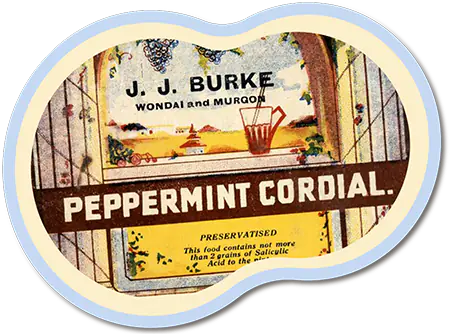
I’ve always liked using peppermint oil. But now that I’ve read up on even more studies – with actual scientific research highlighting its potential as a hair growth product – I’m going to be far more consistent in the way I use it.
Peppermint oil promotes hair growth. At least, that’s what I’m getting from all of this.
Now, I’m not expecting miracles overnight. But I’m excited that a natural remedy could be as effective – if not even more effective – than a toxic thing like minoxidil. Try it out, try it daily (unless you want to alternate it with some other treatments), and let me know how you get on!
Happy experimenting!
Get free, semi-regular alopecia-related news things and musings.
Psst… If no welcome email shows up, check your spam.
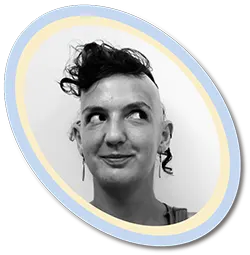
Alopecian. Yoga Teacher. Copywriter. Here to share information, offer support and show people the adventures that can lie in hair loss. I’m proud to have alopecia and I want to help others embrace their baldness, too!

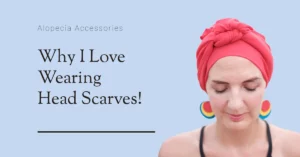
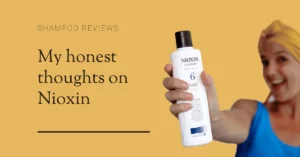
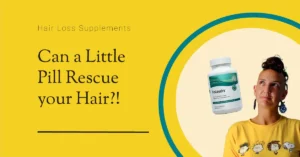

Every month, thousands with hair woes visit my site. The more the merrier! But it takes AGES to write posts and reply to emails. Don’t get me wrong, I love it! But running a website isn’t free. So I’m trying something new: I’m asking for your support. If Lady Alopecia has helped you, please consider buying me a (virtual) coffee or even become a patron of the site. Thanks!
I’m Emma. I’ve had alopecia for 24 years and I’m here to inform/hopefully empower people like me! Read my full story here. But I’m not a doctor, so any advice here is based on my own research and experience. I’m also in a few affiliate programs – see my disclaimer page for more. Or contact me here. Also, why not join a thousand fellow alopecians and get my-semi regular hair about life with irregular hair?
Psst… If no welcome email shows up, check your spam.
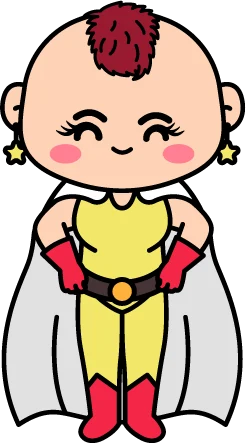
Small print time: Ladyalopecia.com is a participant in the Amazon Services LLC Associates Program, an affiliate program designed to provide a means for sites to earn advertising fees by advertising and linking to Amazon.com.
Copyright © 2023, Lady Alopecia. All rights reserved. Important – By using this website, you promise not to steal stuff. Thank you kindly.
Join the gang and receive semi-regular news and joy from someone with very irregular hair.
11 responses
Question- I was diagnosed with neuro dermatitis and menopause which I refuse to except I have always had waste long hair and a lot of it always for the last few years my hair has gotten thinner and thinner it’s devastating I found your website today and really appreciate all the alternatives and real opinions. I’m going to try the peppermint with coconut and apply overnight and I especially love the idea of a few drops in my shampoo bottle. Does taking biotin alone help you hair?
Hi Christina, thanks for the feedback – I’m glad you find my website useful and best of luck with the DIY treatments! I hope you find them as helpful as I have. While there is no scientific evidence to support the claim that biotin alone can promote hair growth, it can help to strengthen hair bonds and support a healthy scalp environment in general. So, unless you have a biotin intolerance or unless the product in question has unsafe levels of it (check with your doctor if you’re not sure), there may not be any harm in taking it to support regrowth! Hope that helps 🙂
Hi. I intend to use peppermint and lavender and rosemary essential oils for my beard. Do you think its a good idea? Also, I use coconut oil as carrier. Is it okay or Jojoba oil is better for diluting these essential oils?
Thanks!
Hi Ruben! Those are great oils to use, and both coconut and jojoba oils make great carriers. Almond oil is really good, too…my husband uses an almond oil and peppermint oil combo for his beard. Castor is amazing for thickening although it is quite a dense oil so maybe just use it before bed at night – coconut oil is easier to apply if you don’t want to rinse it out! If using coconut, make sure it’s pure extra virgin and cold-pressed. I list a few top brands in this post. 🙂
You can mix all 3 essential oils you mentioned in the carrier, just a few drops of each one, or alternate nights with each individual oil plus the carrier. I hope that helps!
I have a question about minoxidil and your exsperience with it as far as if you had facial hair growth ?
Hi Kirsten,
Thanks for your question – and your email, which I just replied too…apologies for the delay! I really wouldn’t recommend minoxidil. The side effects I experienced personally were dizziness, terrible headaches and fatigue. I don’t remember getting facial hair growth but some articles I’ve read have said this can be another side effect if it trickles down your face. I would avoid this treatment, and steroid injections too, if at all possible! Peppermint oil is just as effective and much, much safer. Just make sure you mix it with a carrier oil before you apply it.
Good luck!!
Emma (Lady Alopecia) 🙂
Hi L.A.
Thank you for giving me hope. I am 46 and menopausal so I losing my hair by the bulk, my hairdresser is now asking me what’s going on to which I have no response, I once had thick luscious hair that was the envy of many. I now want to cry when I see how thin my hair has become, I have processed my aloe in 2 ways, in a carrier oil in a dark place waiting for it to do its thing as per your recommendation, and I have also pureed some to use as a leave in conditioner when combing my hair.
Quick question I have noticed you have made no mention of olive oil in this hair rescue blog. Does olive oil play any positive role in hair restoration, and is it okay to use it as a carrier oil?
Dear Lesley-Ann,
I’m so sorry to hear about your experience with hair loss – I know how tough it is to go through, especially the embarrassment of being in a salon with all those questions directed at you and not having any answers. My hair also used to be my trademark and without it, I felt like my identity was being stripped away. But I’ve come to learn, there is SO much more to us than our hair, or our appearance! It may not feel that way to you now, but there is more beauty and strength in you than you know. 🙂
Still, I’m glad to hear that my website is helping and that you’re making use of natural remedies like aloe vera! Remember, you can even keep a couple of chunks of it in the fridge and simply rub the fresh gel onto your scalp, too. That’s very cooling, and great for lowering inflammation. Good point about the olive oil and the short answer is yes, it does have a positive role in hair restoration! Any of these cold-pressed vegetable oils have lots of fatty acids and nutrients, and they’re really nourishing for your hair (particularly if it’s under oxidative stress). I talk more about natural oils in this post and even though olive oil isn’t on that particular list (as personally, I use coconut or castor as a carrier), most of the same benefits apply to olive oil.
Wishing you all the very best, and thanks again for your question!
Emma
I have a question about minoxidil and your exsperience with it as far as if you had facial hair growth ?
You inspire me to keep trying. I am 63 and have thinning hair, I have tried all the remedies all the shampoos everything except minoxidil!! I am inspired by your expertise and humor! Keep it going!!
Hi Tess, thank you so much for your lovely comment – I really appreciate the feedback! And I would agree with your decision to avoid minoxidil, it gave me terrible headaches and didn’t work in the long-term anyway. Enjoy the rest of my posts and take care! 🙂